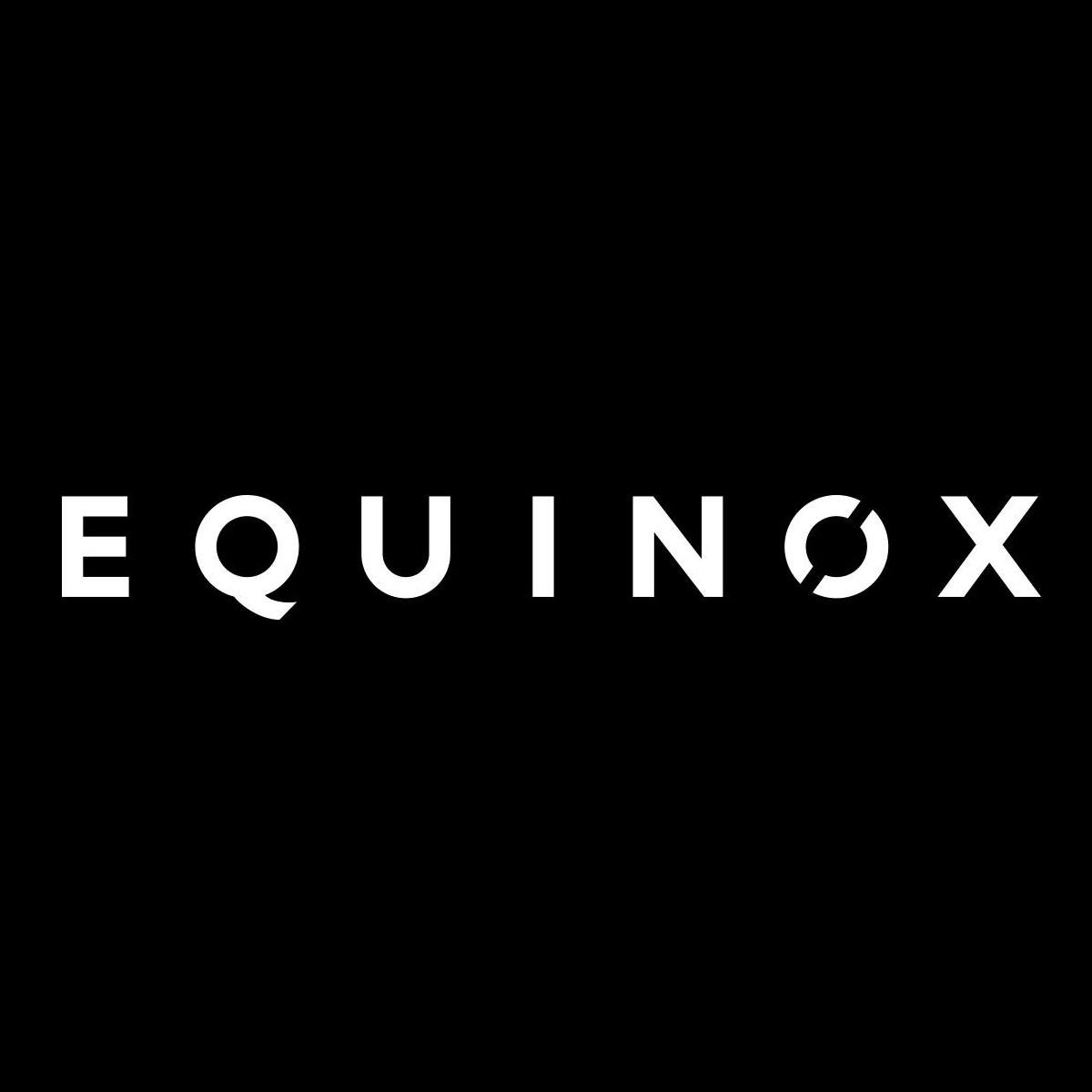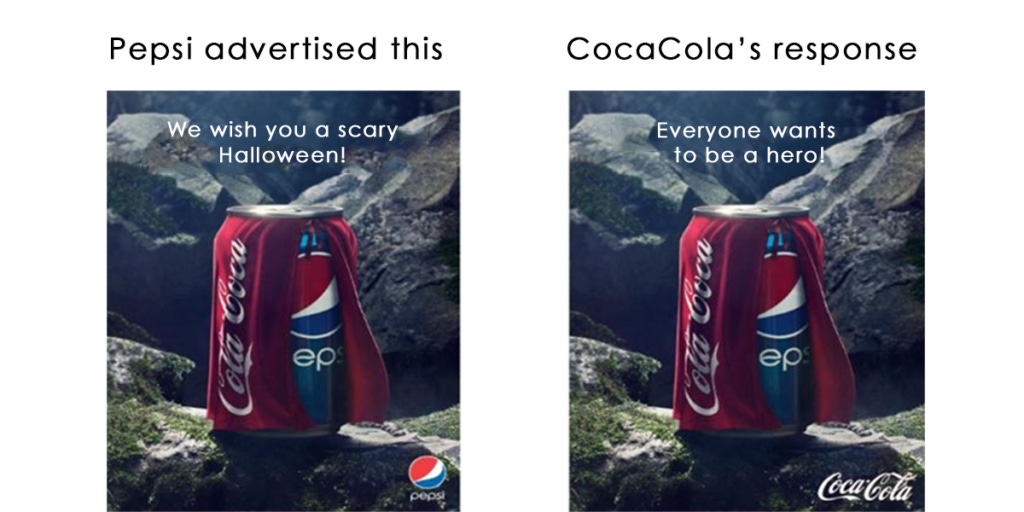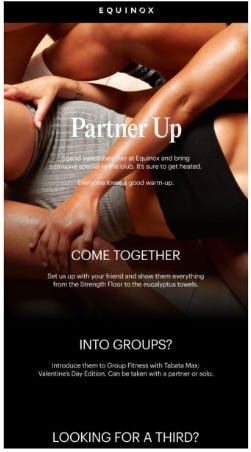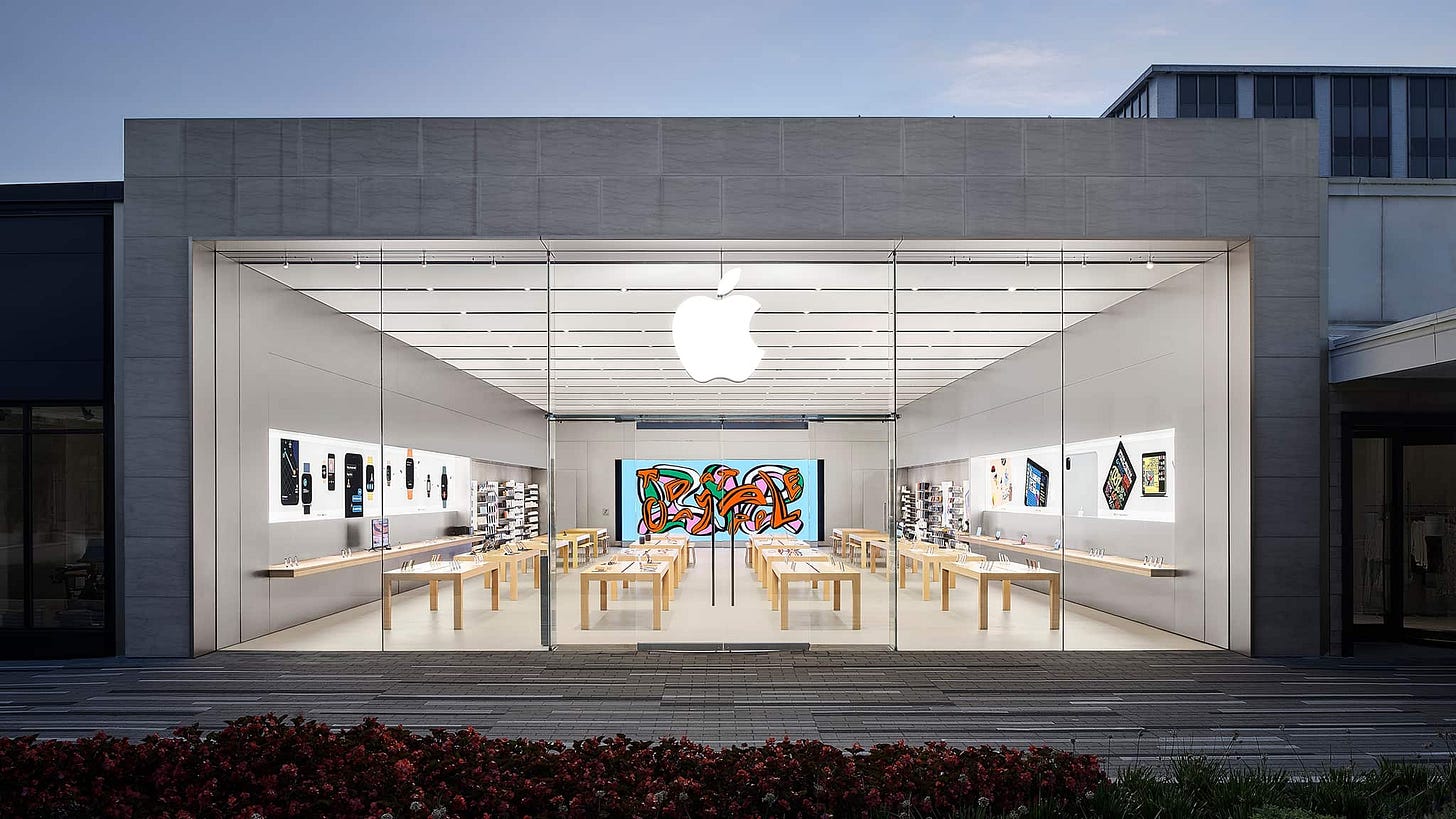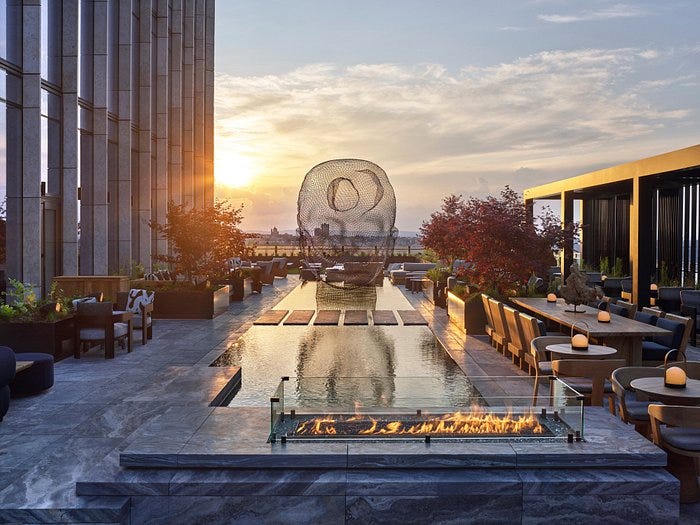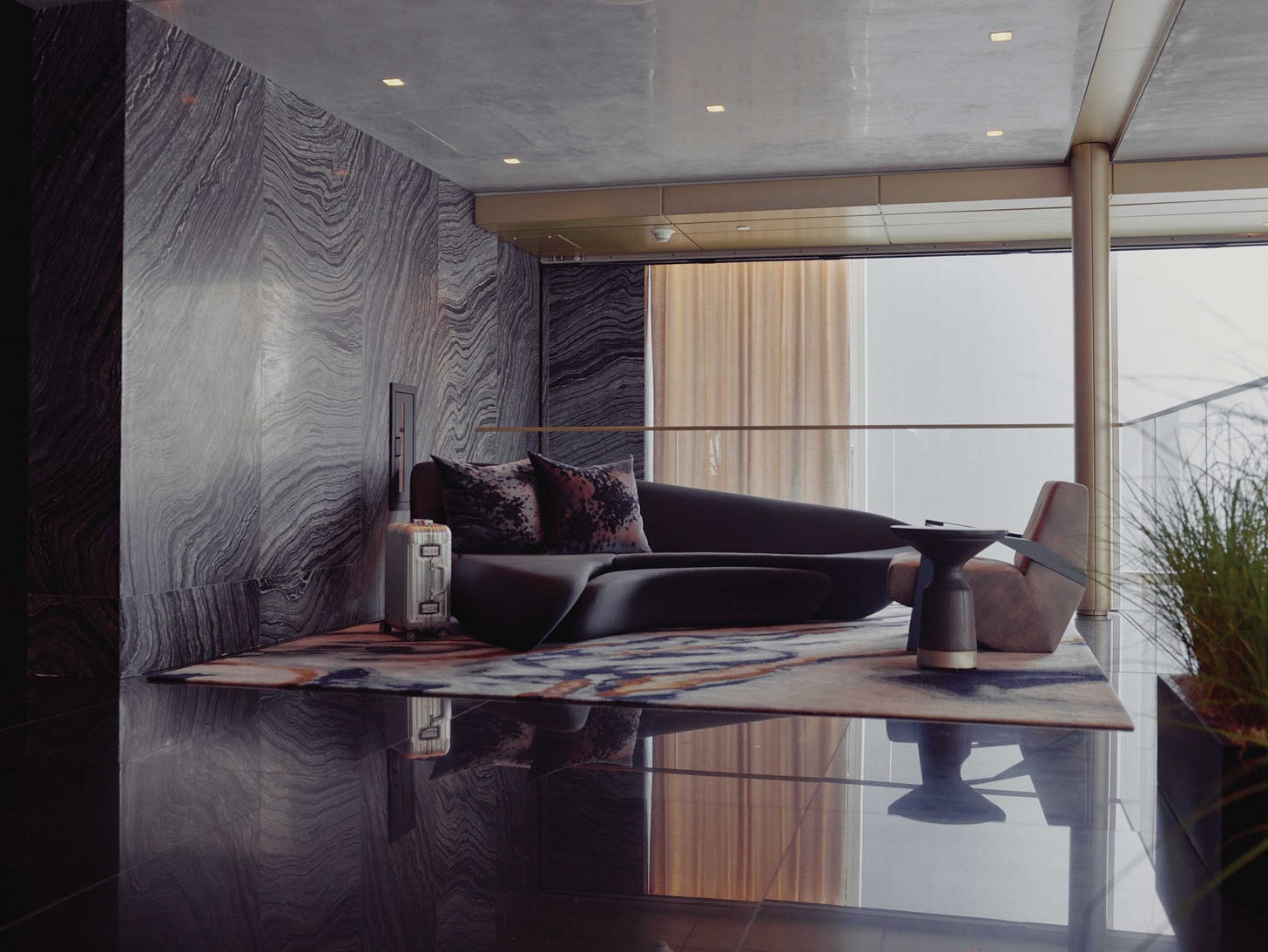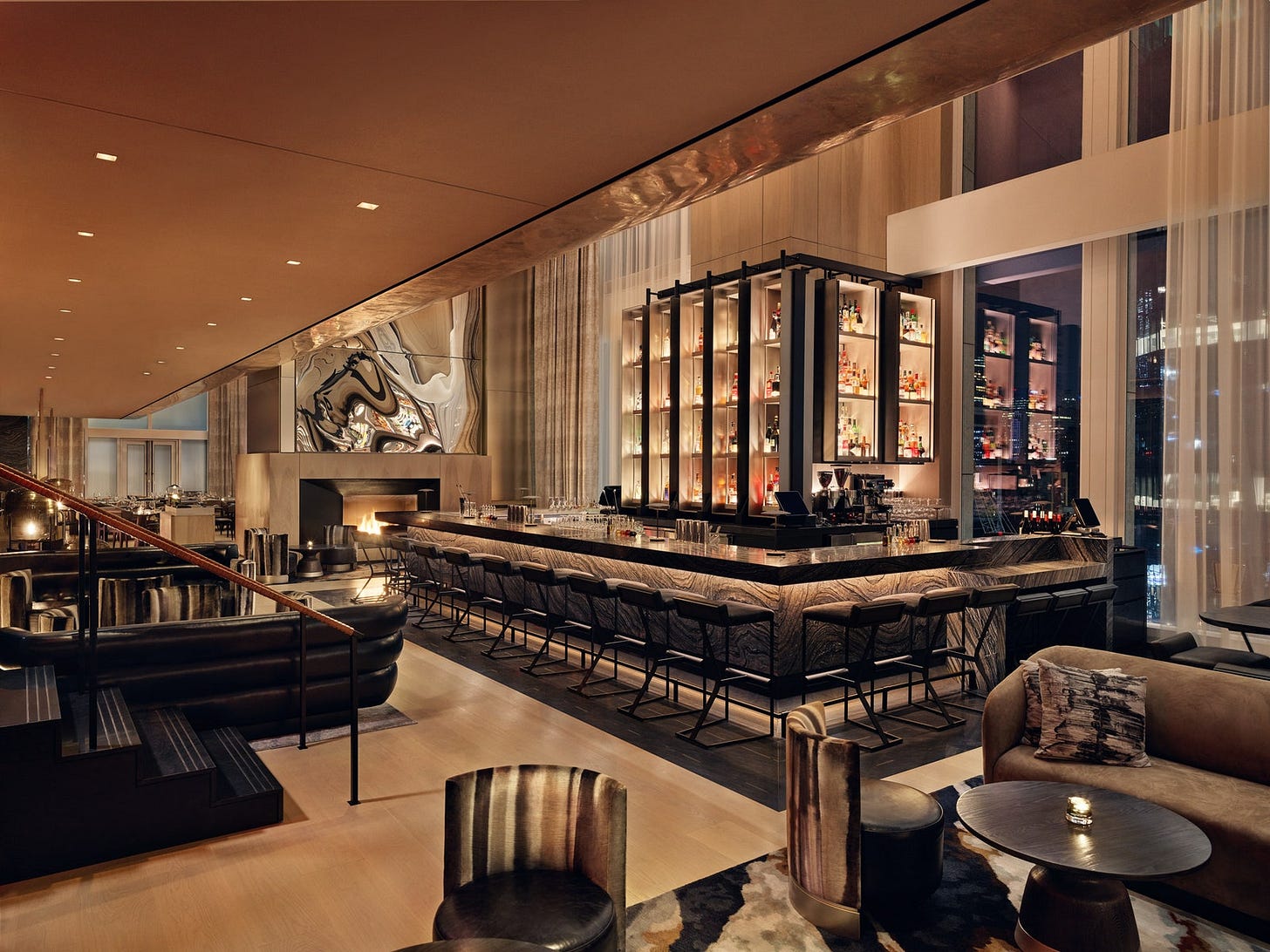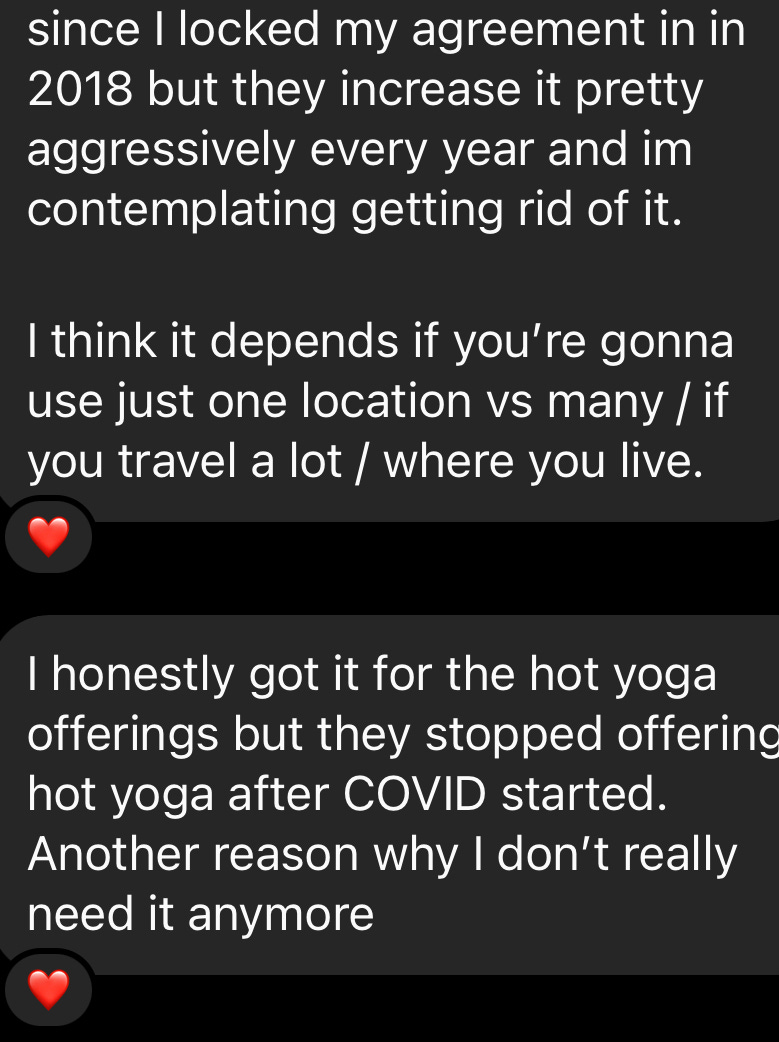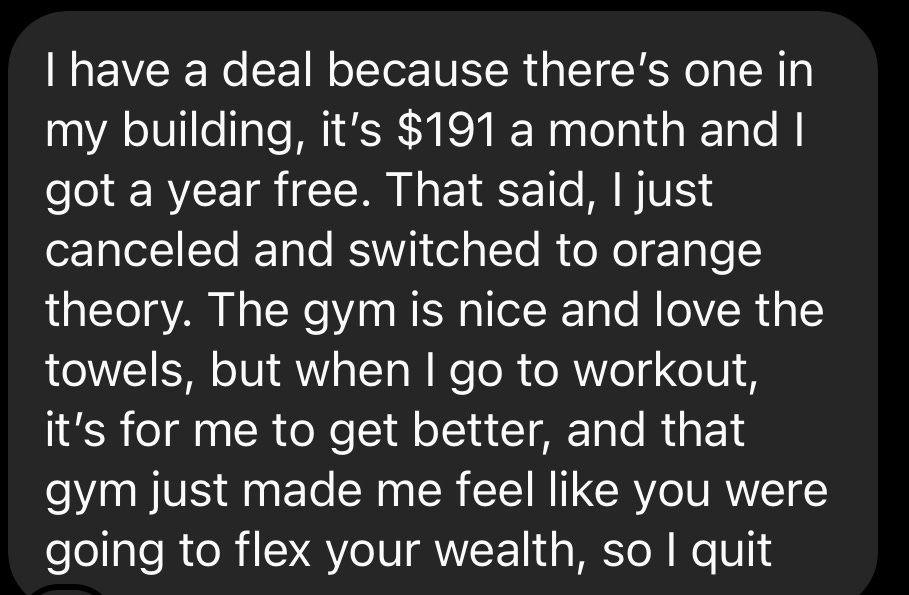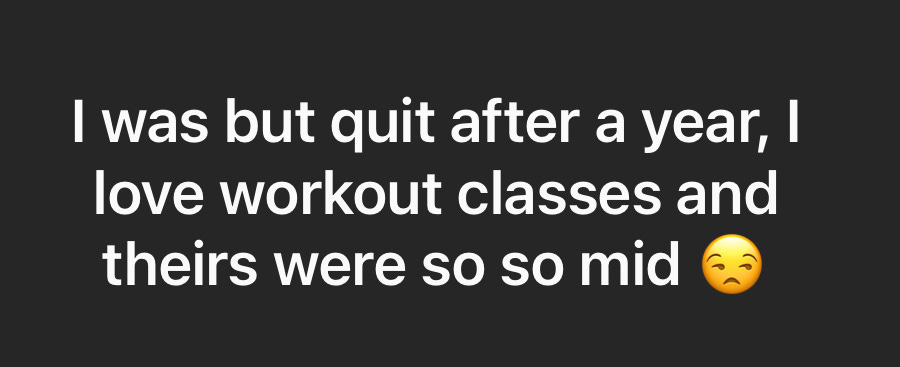Safi’s Note:
I turned 29 over the weekend and the best birthday present would be if you could get one friend to subscribe so we can climb over that coveted 500 subscriber count!
I enjoyed working with Stuga, the platform making buying and owning real estate multiplayer, on the last piece. Many of you checked out their website and a few even started the process of co-owning a property with your loved ones. I am blown away by y’alls willingness to try out the companies I write about.
The date was September 12th, 2001. Ash-laden smoke blanketed Manhattan. A shadow from the downed towers. The entire city, no – the entire country – was brought to silence. Nearly all 350 million of us were ready to lock down. All perhaps but for one man.
Harvey Spevak, the newly appointed CEO of Equinox, stood peering out at the destruction. He stood at the head of a conference table.
“We must close the gyms,” one of his colleagues opined.
Without turning from the window, Spevak answered, “No, we will remain open tomorrow.”
“But Harvey, the whole city is shut down! It’s not safe. How can we possibly stay open?”
He turned and slammed his Palm Pilot on the conference table.
“We are staying open. We are a sanctuary for our members. We must preserve their sense of ritual during these trying times.”
While my telling of GQ’s 2016 story of the club may be a dramatization, it illustrates the role that Spevak saw the gym playing in its members' lives. After all, this event directly inspired the creation of the iconic tagline: “It’s Not Fitness, It’s Life.”
The Equinox Group is a sprawling “collective of the world's most influential and differentiated lifestyle brands.” At the center are the 100+ Equinox locations that command memberships from ~$3000 to ~$5000 annually.
Within 30 years, Equinox has become the most distinct fitness club brand in markets like New York City, Los Angeles, and Miami. If you’ve heard of the company, you have a stance on it. And that’s deliberate. Through its messaging, operational choices, and architecture, Equinox establishes and reinforces its belief system of commitment, perfection, and beauty. Either opt in or don’t bother entering their domain. They don’t want in-betweeners, the uncommitted, or the non-believers.
It’s rare for a company to so clearly communicate what they believe and who they don’t want their customers to be. For that reason, we’re going to narrow in on five brand decisions this divisive fitness club made and determine if they have achieved “Brand Power”. Made famous by Strategy Daddy Hamilton Helmer, these Powers or “moats” are ways businesses defend against competition. (For more on 7 Powers, read this.) We will primarily be analyzing their fitness clubs but will also dabble with “Equinox Hotel New York,” one of the “50 best hotels in the world,” SoulCycle, and Blink Fitness.
Today’s workout plan:
Warm-Up I: History & Facts
Warm-Up II: Brand Power 101
Working Sets: Five Key Equinox Brand Decisions
Set #1: Messaging
Set #2: Us vs. Them
Set #3: Product Design
Set #4: Brand Segregation
Set #5: Equinox’s One Rep Max
Cool-Down: Does Equinox have Brand Power?
Let’s get after it.
History & Facts
The Equinox story is a family story. In 1991, Daniel and Vita Errico were running real estate in the Upper West Side. They noticed that the local gyms didn’t match the affluent neighborhood. In the 90s, gyms looked more like “Average Joe’s” than “The Globo Gym”. Built for the bodybuilder. Rugged. Low-lit. Basement dwellings. “Vibes” were not important to the aspiring Arnold Schwarzenegger.
The Erricos wanted to Shake Weight things up. This gym would be a meeting point. A place for after-work “Happy Hour” that didn’t revolve around the bar but instead, the barbell. They brought in their sister Lavinia and got started.
The first location was on Amsterdam Avenue and 76th Street. From its first rep, Equinox was positioned as a premium product, charging 50% more than its competitors. The team emphasized sleek and bright interior design. Upbeat music. Ambiance over aggression. Amenities included a juice bar, a stocked locker room, and a “wellness center.” It had cutting-edge offerings like reiki, massage, and indoor cycling. They built their own “Equinox Training Institute and Certification Program” so their trainers would be consistently best-in-class. While some of these seem standard now, they were novel at the time.
Nine years and 10 locations later, they sold the business to The Related Companies for $505 million. Harvey Spevak, who was previously a VP at Chelsea Piers Sports Center and had been working at Equinox for a few years, became the CEO.
Today, the Equinox Group is an empire of fitness-related businesses:
Here are a few of the main revenue drivers:
The company’s last known valuation was $7.5B back in 2021 when the man in the arena himself, Chamath Palihapitiya, considered bringing them public. It’s unclear which parts of the business were included in that valuation. In 2019, reports showed they had 350,000 members paying an annual membership starting at $2200. That means that at the time, Equinox brought in a minimum of $770M topline. Let’s just call that ~$1B in 2019. Since then, prices have increased and new markets have been opened. Looking hot is big business.
The Errico siblings set the standards for what we expect from the fitness club: the ambiance, the beautifully designed spaces, and the amenities. However, the fitness club didn’t become Equinox until Spevak elevated the brand over the last 20+ years. Before we get into the details, let’s take a pause squat to understand what Brand Power even is.
Brand Power 101
“Brand Power” is one of Strategy Daddy Hamilton Helmer’s 7 Powers. He describes brand in two ways:
“Branding is an asset that communicates information and evokes positive emotions in the customer, leading to an increased willingness to pay for the product.”
“The durable attribution of higher value to an objectively identical offering that arises from historical information about the seller.”
Combined, this means that a company with Brand Power can convince customers that its offering is superior to others, and therefore, charge a higher price for it even if the product is exactly the same.
Brand recognition is not Brand Power. Just because people know your name and logo does not mean that your brand can be used as a competitive advantage. We all know Pepsi, Reebok, and Android but we do not hold them in the same esteem as Coke, Nike, and Apple. Being well-known does not mean you are necessarily known well.
The two elements of Brand Power are
“Affective Valence”: Our built-up associations with the brand elicit good feelings about the offering, distinct from the objective value of the good
“Uncertainty Reductions”: A customer has “peace of mind” that the brand’s product will be just as expected
A company’s brand becomes a defense against competition because its competitors must invest heavily into building their own with no guarantee it will work. It takes a considerable amount of time, consistency, and capital to create a brand that has Brand Power. Keep this in mind as we stretch out elements of Equinox’s brand.
If you’re digging the content thus far… and you aren’t already…
Five Key Equinox Brand Decisions
Here is a select group of both marketing and operational decisions the company made that I believe establish and reinforce the Equinox brand.
#1: Messaging
Equinox’s messaging is in your face. It’s… distinct. Common themes are mortality, sex, and ritual.
Mortality
Mortality is a motif of their marketing campaigns through the years. As Sam Fuhrer put it in his piece, “The Empty Promises of Equinox,”
“For almost every member who attends, the subconscious undertone of the club’s ethos is a communal battle against death and aging. Members are engaged in the spiritual quest to control the variables of nature while shaping the physical form of the self in the fight against negligence and deterioration.”
This motif is core to several campaigns like,
The message here is clear: Your days are numbered. Spend them at Equinox.
Hot Girl Shit
Sex appeal is a mainstay of the fitness industry. Equinox takes it to dizzyingly creative heights. The brand acts as the provocateur, leveraging our desire to be hot, to meet hot people, and to do hot things. I am limiting my example to the more “safe-for-work” variety but there are plenty more you can look up on your own.
Their sex-forward marketing campaigns are on the spectrum between playful to soft p*rn but all have a way of sticking in your mind. It’s about the pursuit of hotness while being around other hot people.
Ritual
On September 12th, 2001, Equinox remained open when the rest of New York City was closed. As GQ reports,
“Equinox kept its doors open to help preserve a sense of ritual for members whose lives had been shaken up.”
Notice how the emphasis is placed on purpose rather than product. Equinox didn’t remain open so members could “work out their anxieties,” but instead as a sanctuary. A place of worship. They aren’t shy about this. They describe themselves on their website as, “a temple of well-being.”
Even its own members, like the ‘The Writing Guy’ David Perell, agree. In a 2016 essay, he writes that working out at Equinox is, “Like a religion, members find meaning and fulfillment by striving to become their best selves through a daily worship.”
The brand pushes on this dramatic flair and religious coating often. Altogether, the brand’s messaging is largely focused on living your best life, accessing your highest potential, and being hot. Allow Sam Fuhrer to say it better than I can:
“Equinox appeals to the modern human’s desires for sex, status, religion, and community. The gym itself functions as a holy sanctuary; promising the eternity of youth.”
This messaging is compelling to some and a turn-off for others. It’s purposefully divisive. An “us versus them” narrative is exactly what Equinox wants.
#2 Us vs. Them
Equinox unapologetically draws a line between the devotees and the non-believers. This began with Harvey. As soon as he became CEO, he removed Equinox from the newspaper’s gym listings. He didn’t want Equinox to be considered a peer. Equinox is a place of worship, after all.
This exclusive spirit is applied to other operational choices. For example, Equinox doesn’t accept new members on January 1st. They made a whole campaign called “We Don’t Speak January” to bring awareness to this fact.
Their rationale for this choice is:
“January 1st is one of the largest sign up days for fitness clubs as people prepare for a ‘new year new me’ - but for our members, it’s just another day. Equinox is a lifestyle - not a trend. We speak the language of fanatical dedication. We don’t speak January.”
It’s intentionally “douchey”. Equinox isn’t meant for everyone. It is meant for the select few who can afford it and adore it. These operational choices further emphasize the exclusivity of its brand. I wonder what sign-ups on January 2nd are like.
#3 Product Design
The Apple Store is the single greatest advancement in physical retail design in our lifetime. The open concept, fluid check-out experience, glass, and woodgrain elements remain novel. Each store is unique, absorbing local touches while maintaining a certain familiarity. The store experience is part of the product experience. They’re the Kim K of store design, influencing other companies to take a similar approach.
Equinox has done the same with the fitness club. They have established a winning formula to cement their perspective of the world into physical space. There is, as Sam Fuhrer put it,
“...a heightened level of architectural thoughtfulness and a mastered awareness of how space manipulates the human body… With the seduction of a European sex club combined with the mystique of an ivory corporate tower.”
There is a consistency to their product: The contrast of natural light and dark spaces. Open sight lines. The intoxicating eucalyptus aroma. Grand staircases. Privacy — you can rarely peer into an Equinox space from the outside. All of these elements make their gyms more reminiscent of a spa, not a place to sweat it out.
At the same time, Equinox also emphasizes that each location is unique. In some cases, they partner with historians to find details that can influence the space. For example, their Bond Street location was inspired by an “artist’s loft” because creatives like Andy Warhol squatted in the buildings nearby. This influenced the lighting, types of metal used, and furniture choices. In an interview with Forbes, Equinox’s SVP of Design Aaron Richter said,
“It’s very residential and eclectic. [We included] pieces of furniture that you might have dragged off the street. It’s a mish-mosh of different vintages from all over the place.”
Even if its customers may not know the designers’ intentions, they can feel the Equinox difference. Richter makes it clear that this attention to detail is because,
“We need to keep up with that to maintain this luxury positioning.”
They are aware that members new and old expect Equinox locations to be as gorgeous as the patrons. They achieve this distinction by hiring designers and architects from the lifestyle and hospitality realm, not other gyms.
Equinox further distinguishes its physical brand by prioritizing gathering spaces. Lounges and co-working elements have steadily taken more space over the years. According to Forbes, the average allocation for lounge spaces increased from 100-200 square feet in 2013 to 450-700 square feet in 2018. Get a load of the space below. If you didn’t know you were looking at a gym, this could be confused with a hotel lobby Kendall Roy would be taking a very important business call.
For the sake of transparency, not all of their gyms look or feel as luxe as others. Some, like their Upper East Side location, feel drab and corporate. Their Downtown Brooklyn location is cramped. You can tell when Equinox had the benefit of a ground-up development vs. a space takeover. As is the reality of a real estate product, you have to make the most of what you can get. On the whole, Equinox’s physical brand is what leads its luxury position.
#4 Brand Segregation
Hamilton urges strong brands to refrain from compromising their hard-earned positioning. He writes,
“The biggest pitfall lies in diminishing the brand by releasing products which deviate from, or damage the brand image. Seeking higher “down market” volumes can reduce affective valence (the good feelings we have about the brand) by damaging the aura of exclusivity. Dilution threatens branding power because it [forces] a company to restart the slow and uncertain process of building affective valence.”
We’ve established that Equinox is a luxury brand. However, The Equinox Group had broader aspirations to move down market and into adjacent ones. So how could they maintain their luxury brand position while making moves? By keeping these new brands a battle rope distance away.
The best example of this is Blink Fitness, a chain of affordable gyms. The starting price is $15/month. They have a smaller footprint, less equipment, and no amenities. I was a customer for years before I found out that they were owned by Equinox. They ensure that there is absolutely nothing to indicate they are related on the surface.
Equinox Group gets the benefit of going downmarket without damaging the aura of exclusivity. They get to leverage their strengths in processes, equipment deals, and real estate analysis to make a successful, standalone business in the mass market segment — without sacrificing or cannibalizing their core.
The same can be said for SoulCycle. They want this cycling studio to be a distinct experience with a different business model (you pay by class) at a different price point. Interestingly, Equinox’s in-house cycling classes have a different feel to them. It’s not just a cut-and-paste of the SoulCycle experience. Here is a post I saw on Reddit,
Both Blink and SoulCycle are distinct products made for different customer segments. This way, Equinox gets to keep its pole brand position while going both down-market and expanding horizontally into other niches.
#5 Equinox’s One Rep Max
Everybody wants to open a hotel. And I mean, everyone.
Even though McDonald’s was the most recognizable consumer brand in the world, their 2001 “Golden Arch Hotel” lasted two years. There were many reasons for this “controlled failure” but I chalk it up as a brand-product mismatch. McDonald’s sells the absolute cheapest fast food. They had no business trying to create “four-star accommodations with cutting-edge in-room technology.” When they closed in 2003, they became just another addition to the hospitality graveyard of overzealous visions and under-delivered personal touches.
In stark contrast, Equinox Hotel New York is crushing its new workout routine. In September 2023, it was rated one of the 50 best hotels in the world — one of two U.S.-based hotels to do so. And it hasn’t just been well-received by critics. Guests themselves adore it. It has a 4.5/5 rating on TripAdvisor, 9/10 on Kayak, and won Condé Nast’s Reader’s Choice Award from 2020-2022.
I can understand why. They took their distinct physical brand and elevated it. Heavy use of light/dark contrast, marble, and open sight lines are all prominent.
It’s obviously beautiful but that’s not why it is so celebrated. This is Equinox’s version of a 500-pound snatch and clean. Their description sets the stage:
“Stay where high-performance lives. We created Equinox Hotels for those who rest and play as hard as they work. For those who seek a place that matches the scale of their ambitions and a space to restore and regenerate. Equinox Hotels. For those who want it all.”
They actually nailed their promise of “restore and regenerate.” They applied their three decades of hospitality, wellness, and fitness to create the “world’s fittest hotel”. Here are just a few details of what they are doing to justify their ~$1000+/night price tag:
Guest rooms, referred to as "sleep chambers" include total soundproofing; all-natural mattresses made of seaweed, natural latex, coconut fiber, and eucalyptus (to regulate temperature); an “Equinox Sleep Coach” that you can consult; and medical-grade air filtration.
Their spa offers cryotherapy, an infrared sauna, nutriDrip IVs, quantum harmonics sessions, and a “remodeling lift facial” that shoots electrical currents into your face to get that Angelina Jolie look.
All guests have access to the Hudson Yards Equinox location that includes a 25-yard indoor saltwater lap pool and their usual suite of in-person classes.
Considering what we know about Equinox, this hotel product and its execution feel natural. It elevates the entire brand halo beyond what it could do with its fitness clubs alone. It feels like the direction that brand has always wanted to go. This Hotel is the brand’s magnum opus. It’s their one-rep max.
Does Equinox have Brand Power?
Equinox has established and reinforced a certain brand. It’s high-end. It’s exclusionary. Equinox is for a select few who are willing to rise to the occasion. But the product behind the brand is a gym. Pare back everything and what remains is gym equipment, classes, and a place to work out. Same as Lifetime, Chelsea Piers, or other higher-end gym chains. So that begs the question: Does Equinox have Brand Power?
Let’s return to Helmer’s definition of this competitive moat:
“The durable attribution of higher value to an objectively identical offering that arises from historical information about the seller.”
The two elements of Brand Power are that our built-up associations with the brand elicit good feelings about the offering, distinct from the objective value of the good (Affective Valence), and that a customer has “peace of mind” that the brand’s product will be just as expected (Uncertainty Reduction).
I asked my friends who either currently are or were members, “Do you think Equinox is worth the price of the membership?” Here are their responses:
J, Current Member
N, Current Member
K, Current Member
A, Current Member
J, Former Member
C, Former Member
C, Former Member
From this sample size, most are or were members for specific reasons – a certain class, a good deal, or an amenity. When that utility was removed, the customer moved or is considering moving on. While the Equinox touches are nice, the core gym product alone doesn’t seem to justify the price difference. Members may have joined because of the brand, but it didn’t line up with product expectations.
Per this group, Equinox may not pass the “Affective Valence” test (good feelings distinct from the objective value of the good) and definitely does not pass the “Uncertainty Reduction” (product will be as expected) test. Equinox does not have Brand Power… yet.
It may never need it. They have other strengths to keep their gyms full despite increasing prices. They are still in their own league. It’s just that we may collectively be waking up to the fact It Is just Fitness, Not Life. As someone who just finished touring their Hudson Yards location, that may be good enough for me.
Let’s get after it,
Safi
What’s next?
Comment which brand choice you loved or hated the most
If you liked this one, hit like and check out the Erewhon piece
If you’re a company that is interested in a deep dive, drop me an email.
Thank you to my ever-expanding editorial squad: Julianna, Kaley, and Jack.
Sources:
Inside Equinox Gym's Perfectly Fit World (and Top-Secret Club)
Is Equinox a good target for Chamath Palihapitiya's Social Capital SPAC?
Equinox’s Merger Talks With Palihapitiya-Backed SPAC Have Ended
Why Equinox’s move to ban customers from joining on New Year’s Day makes sense for its brand
David Rockwell and Joyce Wang team up for first Equinox Hotel in New York
How Equinox Gyms Are Becoming Heavy Lifters In The Design World
Inc Architecture & Design Gives an Equinox Gym the Loft Treatment in Brooklyn
Soul-Cycle.com
Blinkfitness.com
E at Equinox: The Ultra-Exclusive $26,000 Gym Membership for the Mogul On-The-Go



